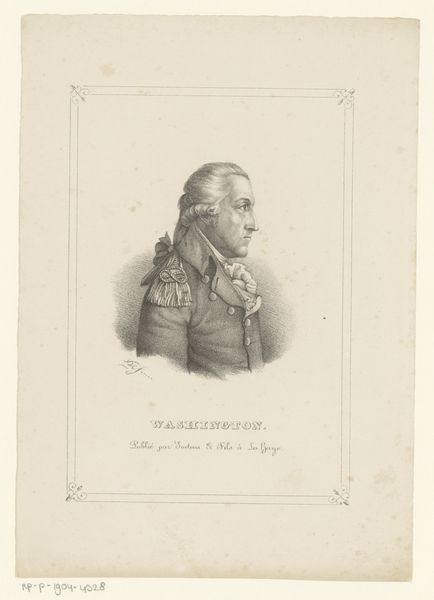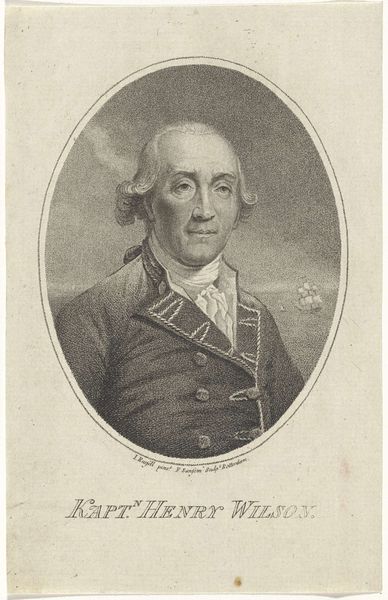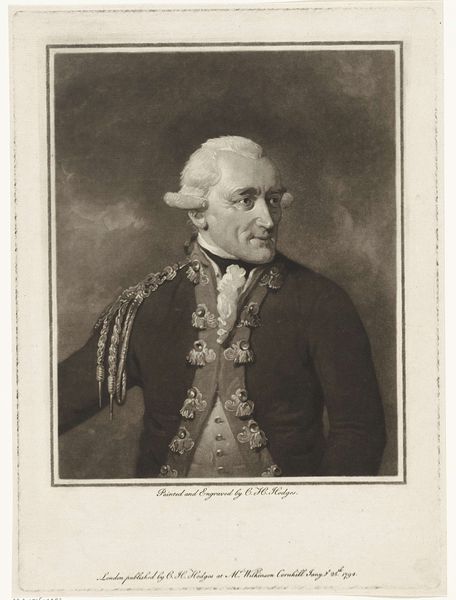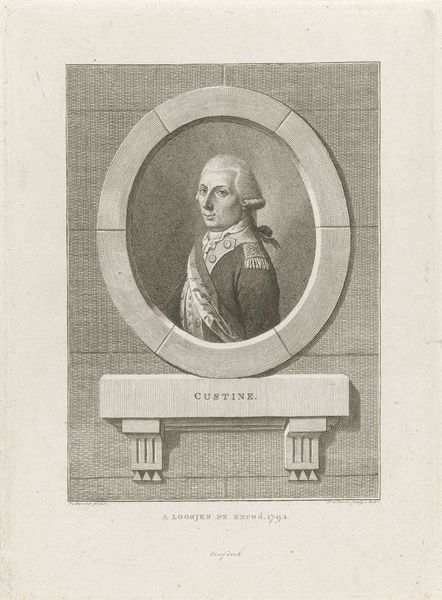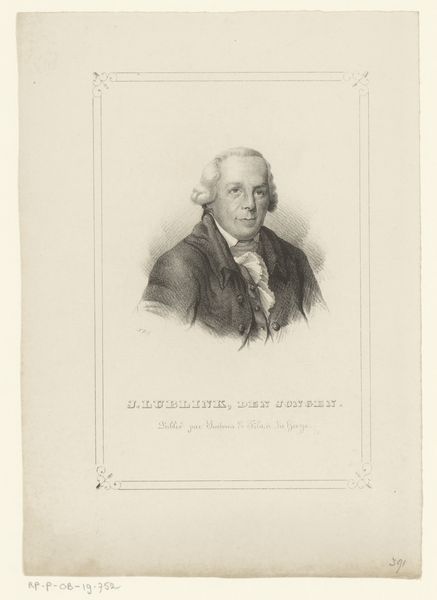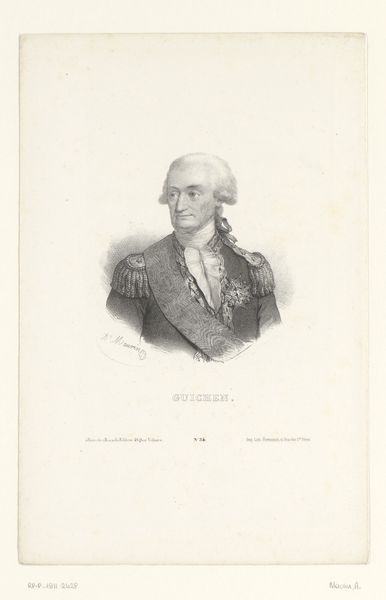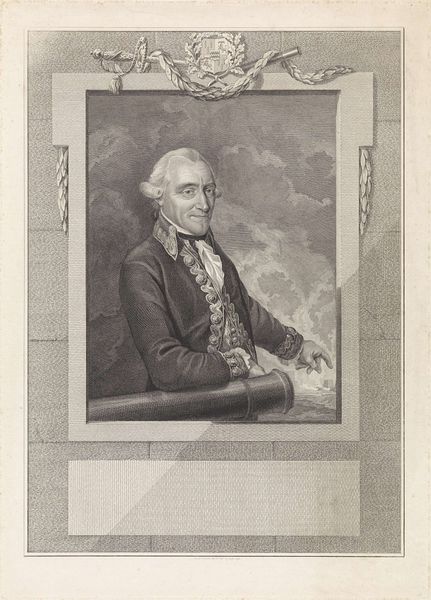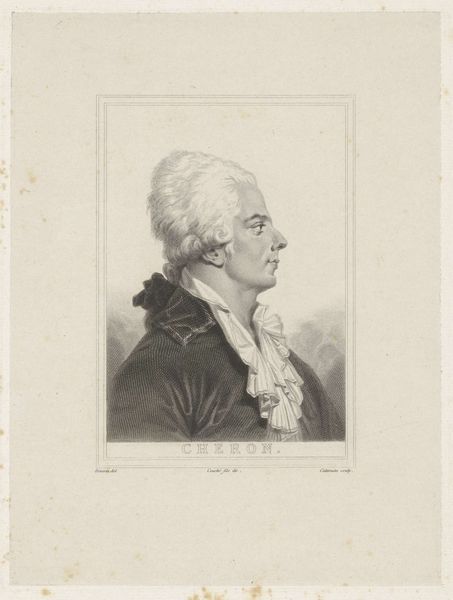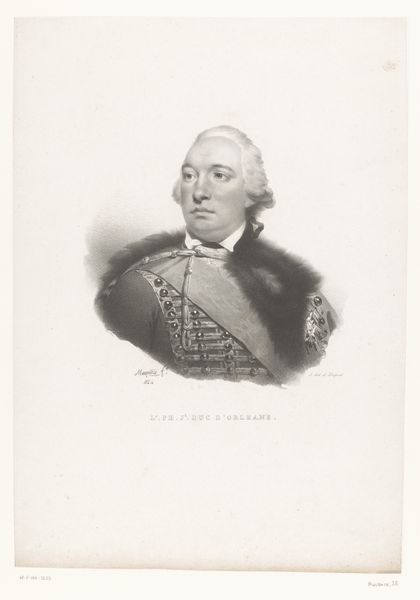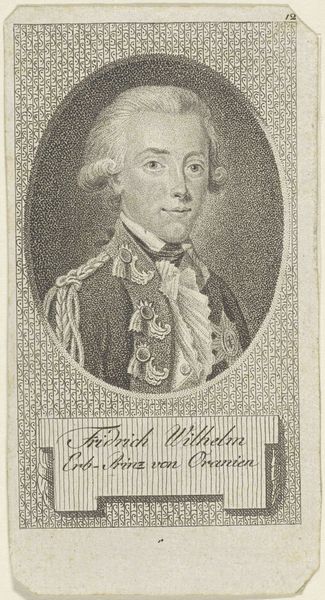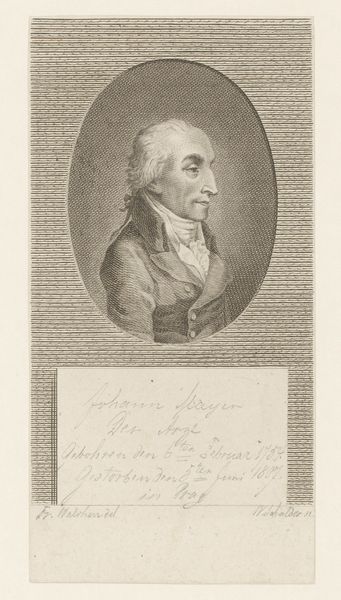
Portret van Georges Washington, de eerste president van de Verenigde Staten 1793
0:00
0:00
hendrikroosing
Rijksmuseum
print, engraving
#
portrait
#
neoclacissism
# print
#
pencil drawing
#
history-painting
#
engraving
Dimensions: height 189 mm, width 118 mm
Copyright: Rijks Museum: Open Domain
Editor: Here we have a print from 1793, titled "Portret van Georges Washington, de eerste president van de Verenigde Staten" by Hendrik Roosing. It feels very formal and classical; what stands out to you most in this composition? Curator: Its linear precision is compelling. Observe how Roosing delineates the figure through tightly controlled engraved lines. Consider the subtle gradations achieved through hatching and cross-hatching; how do they sculpt Washington's profile and attire? Editor: I see what you mean. It is a very precise rendering. How does the oval frame contribute? Curator: The oval serves as a structural device, isolating and emphasizing the subject, almost like a cameo. Notice its smooth, continuous line contrasts with the textures within, further concentrating our gaze. Does this isolation amplify a particular reading, perhaps about the nature of power? Editor: Hmm, maybe. It definitely gives him a sort of iconic feel, separate and distinct. Curator: Precisely. Further analyze the strategic use of light and shadow. The stark contrast not only defines form but introduces a certain gravity, a formal grandeur characteristic of Neoclassical portraiture. How does this controlled contrast influence your reading of the subject's character? Editor: It makes him seem very serious and composed. The technique seems to create that impression, independent of who he was. This has been insightful; thank you for pointing out the importance of the visual language. Curator: The power resides within the very visual articulation; by examining the structure, the semiotics of the formal elements, we unravel the essence of the artwork.
Comments
No comments
Be the first to comment and join the conversation on the ultimate creative platform.
